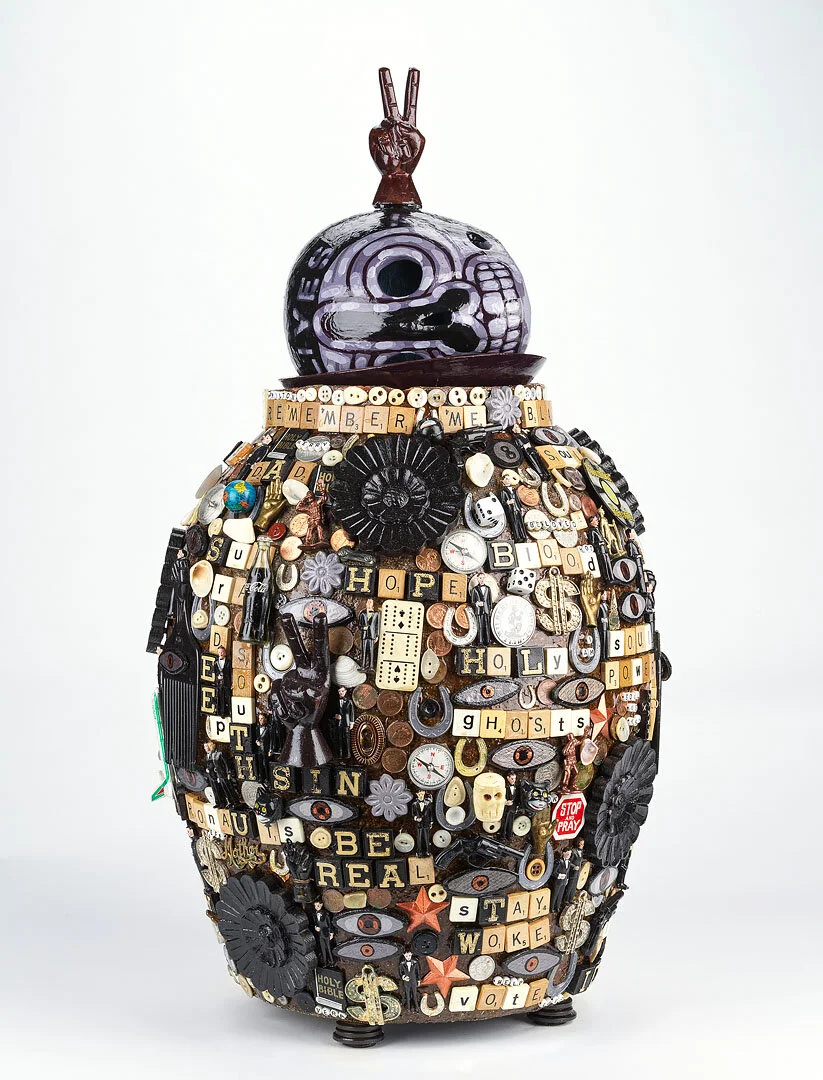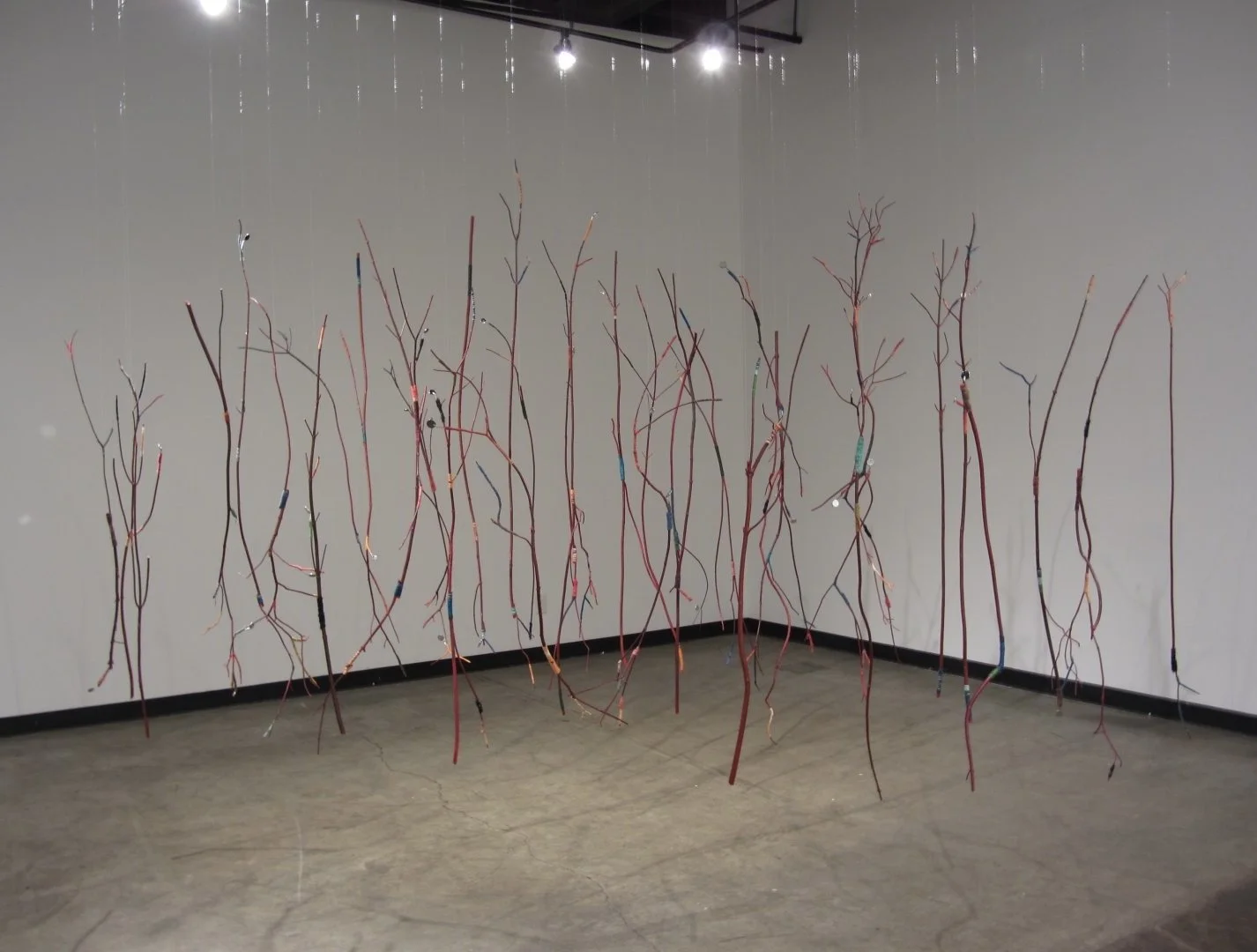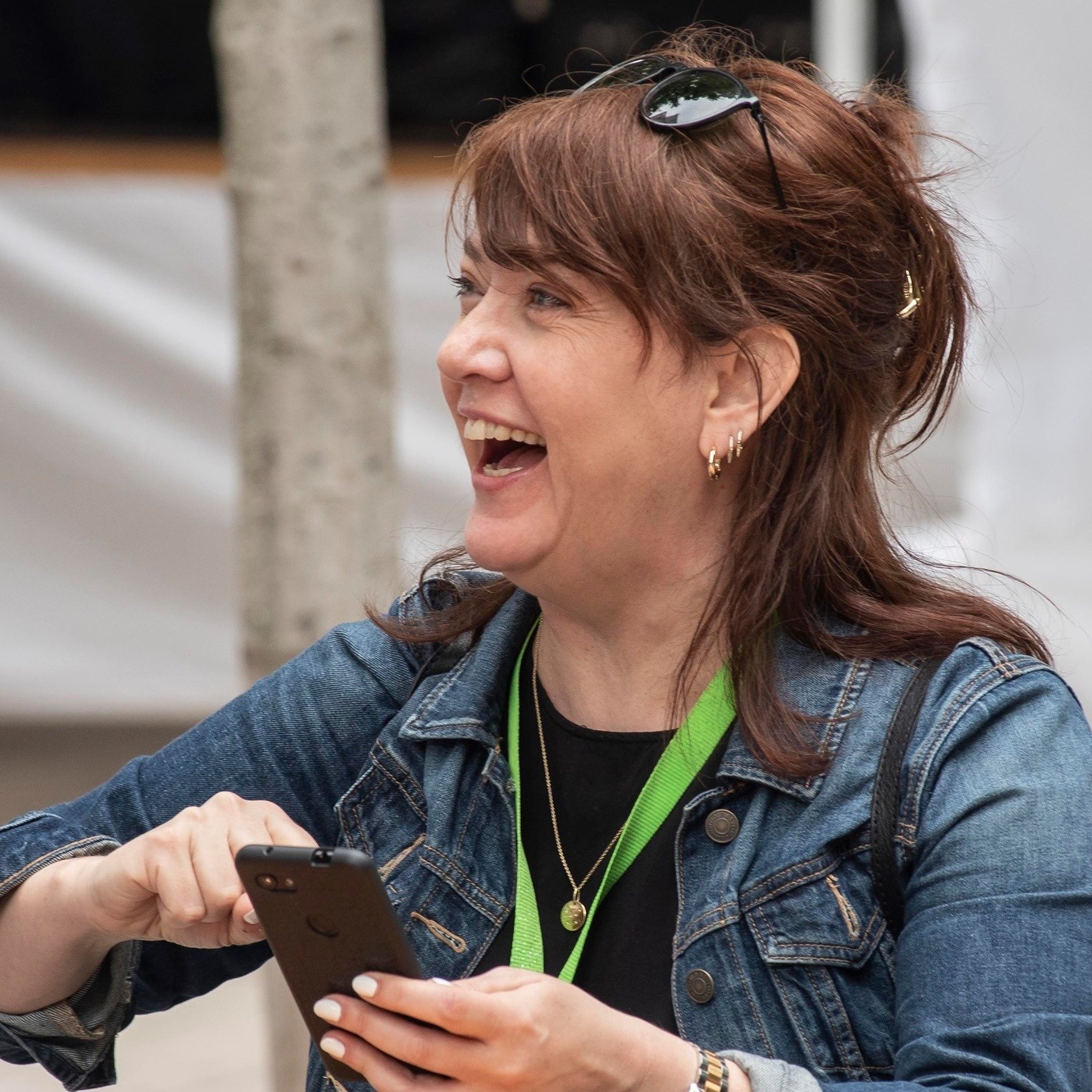Jan Wade assembles the personal, the political, and the historical through found objects in Soul Power, at the Vancouver Art Gallery
The use of everything from antique buttons to Scrabble tiles and horseshoe charms traces back to her childhood in Hamilton’s Black community
Jan Wade’s Obamanation, 2009.
The Vancouver Art Gallery presents Jan Wade: Soul Power until March 13, 2022
AMID ALL HER vivid memories of growing up in a tight-knit Black community in Hamilton, Ontario, Vancouver artist Jan Wade remembers her mother carefully cutting up used brown-paper grocery bags for her to draw on as a child.
“I think that’s why I still love to draw on brown paper,” she says today.
It was an early lesson that nothing should go to waste, and that almost anything could be used to create art.
“I think the Black community as a whole were quite the thrifters,” the Hamilton-born, longtime-Vancouver-based artist says over the phone with Stir. “We weren’t wealthy. That is the thing: my grandmother’s grandmother was probably the same way, where you save everything and then you reuse everything because that’s all you have.
“Since I was a little girl, I have always loved old things and I loved flea markets and thrift stores and just finding things,” she adds. “And I suppose at a certain point I just realized, well, anything is an art supply; you have to use what you have at hand.”
Antique buttons, toy soldiers, horseshoe charms, Scrabble tiles, hair picks: those are just some of the fascinating found objects that Wade collects and assembles to create complex cultural meaning in her works.
Salvaged from alleyways, gifted to her by friends, and sourced from thrift stores and the internet, they emblazon altars, vessels, a wall full of crosses, and more in her first major retrospective, just opened at the Vancouver Art Gallery. Curated with Siobhan Nixon, Jan Wade: Soul Power captures the complexity of race, history, religion, politics, and more through her wildly visual juxtaposition of objects.
Jan Wade’s Memory Jug, 2016. Collection of the Surrey Art Gallery. Photo by Ian Lefebvre, VAG
Every detail in Wade’s work seems to unspool rich personal stories, historic touchstones, and contemporary issues as urgent as Black Lives Matter and voting rights.
Take the antique buttons, which form pearlized patterns on the dozens of crosses that cover a blood-red wall in Epiphany, or that are painted a rich, matte black across vessels and other pieces.
“I’ve always been fascinated by buttons; buttons are the second-most-collected thing after stamps,” Wade reflects. “Most people have a button box, or at least your grandmother did. And I loved my grandmother's button box! And then as a teenager, I just started collecting antique buttons, because I would go to flea markets and thrift stores.
“I do like incorporating things that are utilitarian, everyday objects and that do have a lot to do with female life and everyday life, because I think a lot of people have feelings about those things—a kind of nostalgic feeling about those kinds of things,” she continues. “And then, when I use the buttons and repaint everything black, I kind of think of them as counting the Africans brought in the slave trade to the New World. It’s a way of counting. A lot of people learn how to count with buttons.”
Wade has been making these kinds of profound, free-flowing connections for well over three decades in this city. She turns 69 this year, and it’s meaningful to finally see her work, so resonant at this time of reckoning and Black Lives Matter demonstrations, get its due at the city’s biggest gallery.
Spread over several rooms, Soul Power includes key multimedia paintings, elaborate Memory Jugs and altars, the crosses of Epiphany, and her extended, years-long embroidery project Breathe, a flowing piece of multicoloured fabric that draws on Black Southern quilting and textiles, and that covers several walls. A hardcover book on Soul Power comes out at the gallery early next year, with essays by artist Deanna Bowen and writer Wayde Compton.
Finding something to say
It's a major milestone for someone who has spent a lot of her career operating outside of the mainstream.
After graduating from the Ontario College of Art and Design, where she recalls being the only student of colour, she moved here in the early 1980s—a time when Vancouver had a thriving underground art scene. She recalls that, at the cafe at Robson and Seymour where she worked after she arrived, Roy Arden served the coffee while she took care of food; on the other shift, Stan Douglas and Mina Totino shared duties.
“We were all a group of young artists doing various kinds of work and in bands and putting on plays and writing,” she recalls fondly. “So in a funny kind of way, we were way, way outside the mainstream art scene but it kind of gave us a freedom to just experiment. Whether we succeeded or failed, we weren't going to be judged by the mainstream, because in many ways we didn’t exist to them.”
But tellingly, a young Wade held out little hope she’d become a big name on the arts scene—let alone one day be the focus of a major retrospective at the VAG.
Jan Wade’s Self-Portrait, 2001.
“I think being a woman, and being a woman of colour, was kind of a double whammy,” she says candidly. “You didn’t have a lot of hope that anything big was going to happen in your life in terms of being an artist. So I had to kind of ask myself: Do I believe I have the kind of talent it takes, or even the kind of personality or energy, to actually become an artist? What's that going to mean to me? I’m a woman; I'm a woman of colour, and I may never make it to that mainstream place. Am I going to stop making art? No.
“So even when I was that young I had to decide that my job was going to be to make art and I had to figure out what that even meant,” she elaborates. “The main focus of your practice has to be the adventure of making art and finding out who you are as an artist, and what you have to say. And of course you have to have something to say.”
Wade has gone on to have a wealth of things to say, over a vast body of art, often reworking pieces. One of her key supporters over the years has been the grunt gallery and its onetime director Glenn Alteen; as she puts it, “I can say that without Glenn, I don't know if I would have survived as an artist.” But she’s also exhibited everywhere from the First International Art Biennale in South Africa to Lilith Fair.
Still, to fully understand the work Wade makes, you have to go farther back in time, to before she was born. Her parents, a mother of European descent and a father whose family ties traced back to the American South, were still in their teens when they got married and had her.
“They were basically hauled in by the morality squad of the Hamilton Police Department because miscegenation—the mixing of races—was still against the law,” Wade says. “So my mom basically didn't see her family for a while and they moved in with my dad’s family. They both worked, and so I was at home with my great grandmother and grandmother, who were both born in Danville, Virginia.”
Hamilton’s African Methodist Episcopal Church, which dates back to 1835, became a big part of their lives. Wade describes it as not just a religious centre but a safe community gathering place and a hotbed for activism during the civil rights movement.
Visitors to Soul Power will notice Christian motifs throughout Wade’s work, from crosses to Jesus figurines. But they’ll also notice her questioning the church, as much as she draws on research into the older beliefs that the African slaves brought with them to the New World. (Her Memory Jugs were inspired by old African American funeral rites, in which their favourite belongings and other mementoes were stuck with clay or mud to the vessels.)
“When they brought Africans to the New World, they at first didn’t want to allow them to become Christians because that would mean they would be beings with souls,” the artist observes. “Africans were considered livestock—not people, not humans.”
Wade’s frequent use of text in her pieces, formed with everything from Scrabble tiles to stencils, derives from a similar mix of personal experience and acknowledgement of her slave ancestors. Wade’s parents were both voracious readers, passing that love of the written word down to their daughter, who’s as likely to quote poetry or lyrics in her pieces (“WAR IS OVER IF YOU WANT IT”) as use the simple power of a single word: “Mom”, “QUEEN”, “FAITH”. “I AM HUMAN” makes a powerful bookend to “BLACK LIVES MATTER” in a painted triptych. But there’s a more profound level to her reclamation of words.
“I come from, on my dad’s side, a community that wasn't allowed to read or write for centuries ,” she says. “You could be killed if you were a Black slave and people found out you could read or write. “
Jan Wade’s Breathe, 2009-2020. Photo by Ian Lefebvre, VAG.
Breathing and stitching
Wade’s visual poems link the history of slavery and the dehumanization of Black people to the police violence and other racism she sees today.
Some of the artworks seem hauntingly prescient, such as the major embroidery piece Breathe. When she started stitching it around 2004, she was interested in the meditative quality of embroidery and using it to create a flowing, continuous piece of abstract art out of its panels.
“I couldn't at the time see where they would fit into the art world but I made them anyway,” she says with a laugh.
A decade later, after an American police officer killed Eric Garner on Staten Island by putting him in a chokehold, she started to call the ongoing piece Breathe; Garner had pleaded “I can’t breathe”, and she felt like the textiles she was creating were driven by healing breath.
The first time she ever saw them displayed was when the VAG purchased seven pieces of Breathe for its permanent collection and linked them across the wall in last year’s Where do we go from here? exhibit.
“It was only then that I realized it was really working,” says Wade, who has 28 of the panels showing in Soul Power (out of roughly 70 she’s painstakingly stitched).
There’s an optimism and resilience to the vibrantly stitched work. As the didactic panel reads, “Breathe’s line also represents the thread of continuity between the past and the present, in ways that go beyond violence and trauma and into the power of imagination.”
Obamanation, a triptych of acrylic, wood, and found objects made in 2009, hits that same mix of positivity (“VOTE” and Black wood-carved hands raised with index fingers triumphantly hoisted in the air) undercut with realism (the word “BRAINTRUST” alongside little white male figurines). Elsewhere, she depicts the former president in a work based on old runaway-slave posters, called Run Obama Run.
“I feel like I am, by and large, pretty much an optimistic person, but there is the reality of what is and no amount of optimism is going to fix it or make it better,” Wade reflects matter-of-factly. “There's a thing you have to look at and point at and say, ‘This is real. This has got to change.’ I feel optimistic about life and a lot of things, but my optimism isn't going to fix that.”
Transformation—of collected objects into something new and meaningful, of the ever-evolving assemblages themselves—is a major theme in Wade’s work and practice. And transformation is what she dreams will finally come out of this divided time.
“I hope my work really helps people to think in a different way or look at things in another way, and maybe helps to wake them up a little bit to a different way of being,” she says. “I’m optimistic that there seem to be a lot more young people of colour, and not people of colour, out there in the street. I think the education system has been used for centuries as propaganda….I think we’re all wandering around wondering what we can do about what's happening and what's happened because we have been thoroughly miseducated. So now is the time we can stop the miseducation.”
Jan Wade’s GI Jesus/War Is Over, courtesy of the artist


















